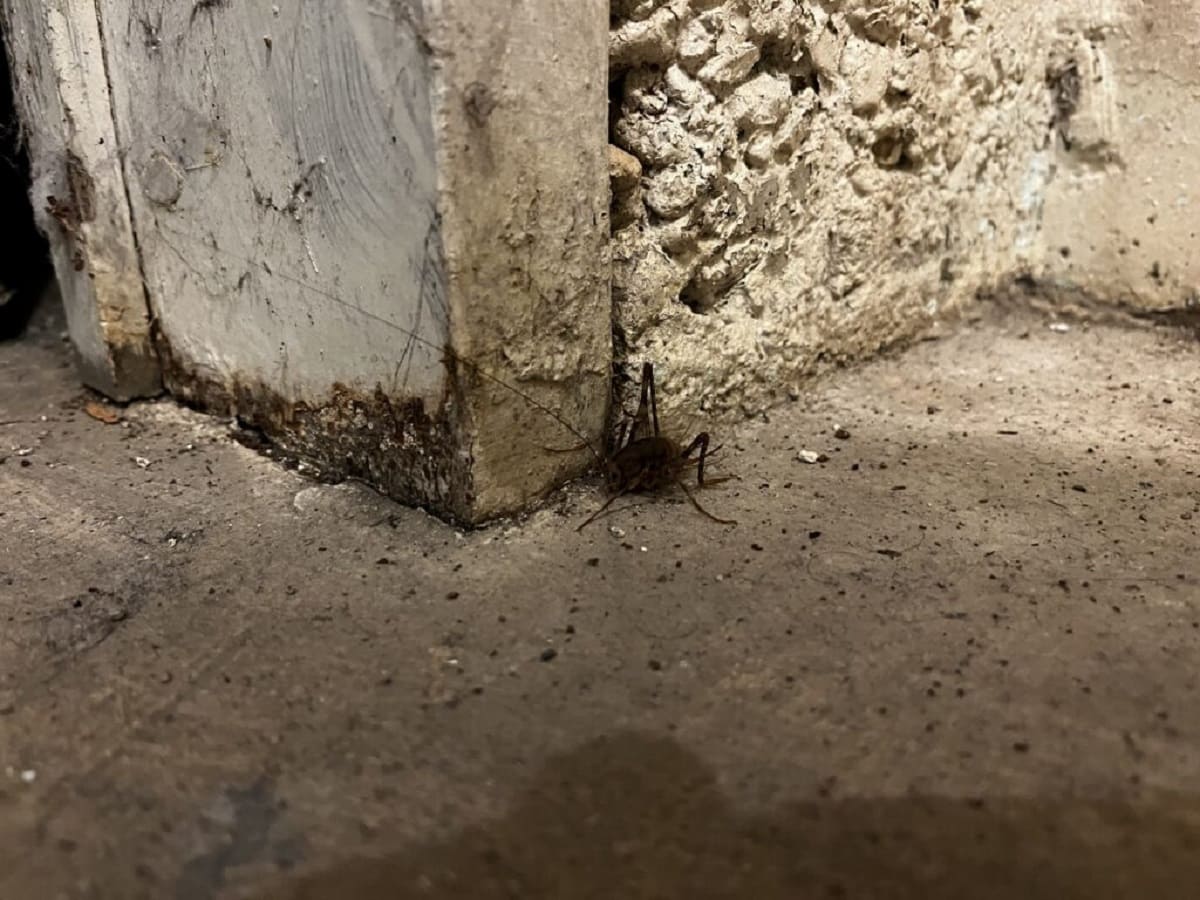

Articles
How To Get Rid Of Crickets In The Basement
Modified: August 20, 2024
Learn effective methods and techniques to eliminate crickets in your basement with our helpful articles. Say goodbye to these pesky pests for good!
(Many of the links in this article redirect to a specific reviewed product. Your purchase of these products through affiliate links helps to generate commission for Storables.com, at no extra cost. Learn more)
Introduction
Welcome to our comprehensive guide on how to get rid of crickets in the basement. Crickets are small insects that are known for their distinctive chirping sound, which can be quite bothersome when they infiltrate your living space. Basements are a common refuge for crickets due to their damp and dark environment, providing them with ideal conditions for survival. In this article, we will explore various methods to identify and eliminate cricket infestations, as well as preventative measures to keep them out for good.
Understanding the behavior of crickets is essential in devising effective strategies to tackle their presence in your basement. There are several types of crickets commonly found in basements, including camel crickets and house crickets. These pests are attracted to basements because they provide them with shelter, moisture, and a food source in the form of insects, organic matter, and even household items like cardboard. By understanding their behavior, you can better target their vulnerabilities and eliminate them from your basement.
The first step in addressing a cricket infestation is identifying the signs. Listening for chirping sounds is a primary indicator that crickets are present. The distinctive noise they make can be especially prominent during the evening and night time. Physical evidence, such as seeing crickets hopping around or finding their excrement, also indicates their presence. Additionally, crickets can cause damage to items stored in the basement, such as fabrics, cardboard boxes, and even insulation. If you notice any of these signs, it’s time to take action.
To remove crickets manually, several methods can be employed. Using a vacuum cleaner with an attachment nozzle allows you to suck up crickets from hard-to-reach areas. Sticky traps are another effective tool, as crickets are attracted to the adhesive and get stuck on the traps. If the infestation is severe, you may consider using a handheld insecticide spray specifically designed for crickets. However, exercise caution and follow the instructions carefully when using chemical agents.
Creating an unfavorable environment for crickets is an important step in preventing their return. Crickets thrive in damp environments, so reducing the moisture levels in your basement is essential. This can be achieved by using a dehumidifier or improving ventilation. Sealing cracks and gaps in walls, floors, and windows is critical to prevent crickets from entering your basement in the first place. Additionally, removing clutter and debris that crickets hide in reduces their hiding places.
Key Takeaways:
- Understanding cricket behavior and early detection of infestations are crucial for effective removal. Employ manual removal methods, create an unfavorable environment, and use natural remedies to keep your basement cricket-free.
- Prevent future cricket infestations by maintaining a clean, clutter-free environment, installing screens on windows and vents, and properly storing firewood. Consistency and vigilance are key to enjoying a pest-free home.
Read more: How To Get Rid Of Crickets In The Attic
Understanding the Behavior of Crickets
When dealing with a cricket infestation in your basement, it is crucial to understand their behavior to effectively eliminate them. There are several types of crickets that can commonly be found in basements, the most common being camel crickets and house crickets.
Camel crickets, also known as cave crickets or spider crickets, are characterized by their humpbacked appearance and long, spider-like legs. They are typically light brown or tan and can grow up to an inch in length. Camel crickets are attracted to basements due to the cool and damp environment, as well as the abundance of hiding places and potential food sources.
House crickets, on the other hand, are smaller in size and light to dark brown in color. They have long antennae and wings, although they are not strong fliers. House crickets are attracted to basements primarily for shelter and warmth, especially during the colder months. They can feed on a variety of organic matter, including insects, plant debris, and even fabrics or cardboard.
So why are crickets attracted to basements in the first place? Basements provide crickets with the ideal conditions for survival and reproduction. These insects thrive in areas with high humidity levels, and the dampness found in basements is highly appealing to them. Moisture can accumulate in basements due to poor ventilation, water leaks, or inadequate drainage. Crickets are also attracted to basements because they offer plenty of hiding places, such as dark corners, crevices, and cluttered areas where they can seek refuge from predators.
In addition to the favorable environmental conditions, basements often provide crickets with a ready supply of food. Crickets are omnivorous and can feed on a variety of materials, including other insects, plant matter, and even household items like fabric, cardboard, and paper. This abundance of food sources attracts crickets to basements, as they can find sustenance easily and reproduce rapidly in such environments.
By understanding the behavior and preferences of crickets, you can better target their vulnerabilities and implement effective strategies to eliminate them from your basement. It’s important to combine multiple approaches, such as manual removal, creating an unfavorable environment, and using natural or chemical remedies, to effectively eradicate the infestation and prevent future ones.
Identifying the Signs of a Cricket Infestation
When it comes to dealing with a cricket infestation in your basement, early detection is key. By identifying the signs of a cricket infestation, you can take appropriate measures to eliminate them before they multiply and cause further damage. Here are the top signs to look out for:
Noises and Chirping Sounds: One of the most common signs of a cricket infestation is the incessant chirping noise they produce. Male crickets chirp to attract mates, and their distinctive sound can be especially prominent during the evening and nighttime when the surroundings are quieter. If you hear repetitive chirping sounds coming from your basement, it is likely an indication of a cricket infestation.
Physical Evidence of Cricket Presence: Crickets leave behind physical evidence that can help confirm their presence. Look for signs such as cricket droppings, which are small, cylindrical black or brown pellets similar in appearance to mouse droppings. These droppings are usually found in areas where crickets hide and feed, such as corners, cracks, or near organic matter. Additionally, crickets may shed their exoskeletons as they grow, leaving behind empty, translucent shells.
Damage caused by crickets in the basement: Crickets are not just annoying with their chirping; they can also cause damage to various items stored in your basement. Fabrics, such as clothing, curtains, or upholstery, are susceptible to cricket damage. These pests may chew through the fabric, leaving behind visible holes or tears. Crickets are also known to gnaw on cardboard boxes, paper, or insulation, which can result in structural damage or compromised insulation. If you notice any signs of damage to items stored in your basement, it may be an indication of a cricket infestation.
It is important to promptly address a cricket infestation to prevent further damage and potential health risks. Crickets can attract other pests, such as spiders or rodents, that may also invade your home. Additionally, their constant chirping can be disturbing and disrupt your sleep or daily activities. By identifying the signs of a cricket infestation, you can take the necessary steps to eliminate these pests and create a more comfortable environment in your basement.
Removing Crickets Manually
When dealing with a cricket infestation in your basement, manual removal methods can be effective in reducing their numbers and eliminating them. Here are three common methods for removing crickets manually:
Using a vacuum cleaner: One of the simplest and most effective ways to remove crickets from your basement is by using a vacuum cleaner with an attachment nozzle. This method is especially useful for hard-to-reach areas or large infestations. Simply turn on the vacuum cleaner and carefully suck up the crickets. It’s recommended to empty the vacuum bag or canister outside to prevent any live crickets from escaping back into your basement.
Trapping crickets with sticky traps: Sticky traps are a convenient and non-toxic method for capturing crickets. These traps are readily available in stores and can be placed strategically in areas where crickets are active or commonly seen. The crickets are attracted to the adhesive on the sticky traps and get stuck when they come into contact with them. Check the traps regularly and dispose of them once filled with crickets.
Using a handheld insecticide spray: If the cricket infestation in your basement is severe and manual removal methods alone are not enough, you may consider using a handheld insecticide spray specifically designed for crickets. Follow the instructions provided on the spray can, wear protective clothing, and apply the spray to areas where crickets are likely to be hiding, such as cracks, crevices, and corners. Exercise caution when using chemical sprays and keep children and pets away from treated areas.
Remember to always read and follow the instructions provided with the vacuums, traps, or insecticide sprays to ensure safe and effective use. It’s important to note that while manual removal methods can be useful for reducing the cricket population, they may not eliminate the entire infestation. Combining manual removal with other control methods, such as creating an unfavorable environment or using natural or chemical remedies, can provide more effective and long-lasting results.
By employing these manual removal methods, you can begin the process of eliminating crickets from your basement and restoring a pest-free environment. However, if the cricket infestation persists or becomes unmanageable, it may be necessary to seek professional assistance from an exterminator who can provide targeted treatments and advice.
Creating an Unfavorable Environment for Crickets
Preventing cricket infestations in your basement begins with creating an environment that is unfavorable for their survival and reproduction. By implementing the following measures, you can significantly reduce the chances of crickets taking up residence in your basement:
Reducing moisture levels in the basement: Crickets are attracted to damp environments, so it’s essential to minimize moisture in your basement. Use a dehumidifier to remove excess humidity, especially in areas prone to moisture buildup. Ensure proper ventilation by opening windows or using fans to improve air circulation. Fix any plumbing leaks and address any water intrusion issues to eliminate potential water sources that attract crickets.
Sealing cracks and gaps to prevent entry: Crickets can enter your basement through small cracks and gaps in walls, floors, windows, and doors. Inspect your basement thoroughly and seal any openings using caulk, weatherstripping, or expanding foam. Pay attention to areas where utility pipes or cables enter the basement, as these are common entry points for crickets. Preventing their entry will not only keep crickets out but also help with overall pest control in your home.
Removing clutter and debris that crickets hide in: Crickets are known to hide in cluttered areas and piles of debris. Keep your basement clean and organized, removing any unnecessary items or clutter that can serve as hiding spots for crickets. Regularly sweep and vacuum the floors, paying special attention to areas along walls, corners, and beneath shelving or furniture. By removing potential hiding places, you make your basement less attractive to crickets.
In addition to these measures, consider installing door sweeps or thresholds to act as barriers against cricket entry. It’s also advisable to keep windows and vents screened to prevent crickets from entering through these openings.
Remember that creating an unfavorable environment for crickets is not a one-time fix. Regular maintenance and vigilance are necessary to ensure these preventive measures remain effective. By taking these steps, you can significantly reduce the likelihood of a cricket infestation and create a basement that is less appealing to these pests.
Seal any cracks or openings in the basement to prevent crickets from entering. Use a dehumidifier to reduce moisture, as crickets are attracted to damp areas. Place sticky traps or diatomaceous earth in areas where crickets are present.
Read more: How To Get Rid Of Basement Bugs
Using Natural Remedies to Repel Crickets
If you prefer to use natural methods to repel crickets from your basement, there are several effective remedies to consider. These natural alternatives are safe for both humans and pets while still providing an effective deterrent against crickets. Here are three natural remedies you can try:
Applying diatomaceous earth: Diatomaceous earth is a powdery substance made from fossilized remains of tiny aquatic organisms called diatoms. It is highly effective in controlling a variety of pests, including crickets. Diatomaceous earth works by dehydrating the exoskeleton of crickets, leading to their demise. Sprinkle a thin layer of diatomaceous earth along cracks, crevices, and entry points in your basement. Be cautious not to inhale the powder, as it can be irritating to the respiratory system.
Planting repellent herbs and plants: Certain herbs and plants have natural properties that repel crickets and other insects. Planting these in and around your basement can help deter crickets from entering. Herbs such as mint, basil, lavender, and rosemary are known to have insect-repelling qualities. Consider growing these herbs in pots near entrances to your basement or in a garden near windows. Their fragrances can help keep crickets at bay.
Using essential oils to deter crickets: Essential oils have strong scents that can repel crickets. Peppermint, eucalyptus, citronella, and tea tree oil are particularly effective in repelling crickets. Create a homemade cricket repellent spray by diluting a few drops of essential oil in water and spraying it in areas where crickets are frequently seen or suspected, such as cracks, baseboards, and corners of your basement. Renew the spray every few days or as needed to maintain its effectiveness.
It’s important to note that natural remedies may need to be reapplied more frequently than chemical pesticides, as their efficacy diminishes over time. Additionally, keep in mind that natural remedies provide a deterrent rather than complete eradication. Therefore, it is recommended to combine natural remedies with other control methods, such as creating an unfavorable environment or manual removal, for the most effective results.
Using natural remedies not only helps repel crickets but also promotes a safer and healthier environment in your basement without the use of harsh chemicals. Experiment with these natural remedies and find the ones that work best for your situation. With persistence and consistency, you can successfully keep crickets at bay while maintaining a natural and eco-friendly approach.
Applying Chemical Treatments
In cases where cricket infestations are severe or persistent, chemical treatments can provide effective control. Chemical insecticides specifically designed for crickets can help eliminate these pests from your basement. Here are two options to consider:
Insecticides specifically designed for crickets: There are various insecticides available in the market that are formulated specifically for controlling crickets. These products come in different forms, including sprays, dusts, or granules. Follow the instructions provided by the manufacturer for safe and effective usage. It’s important to wear protective clothing and gear, such as gloves and a mask, when applying chemical insecticides. Target areas where crickets are commonly seen or suspected, such as baseboards, cracks, and other potential hiding spots. Take care to keep children and pets away from treated areas until the product has dried and any fumes or residues have dissipated.
Consulting with a professional exterminator: If the cricket infestation in your basement persists or if you prefer to leave the task to experts, consulting with a professional exterminator is a viable option. These professionals have the knowledge, experience, and access to specialized treatments that can effectively remove crickets from your basement. They will assess the severity of the infestation, identify potential entry points, and develop a customized treatment plan to address the issue. Professional exterminators can provide targeted treatments, reducing the risks associated with handling chemical products yourself and ensuring effective eradication of crickets.
It’s important to keep in mind that chemical treatments should be used judiciously and in accordance with the instructions provided. Take the necessary precautions to protect yourself, others, and the environment during and after the treatment process. If you decide to use chemical insecticides, it’s also advisable to consider the potential impact on non-target organisms and the overall ecosystem. Always choose environmentally friendly and low-toxicity options when possible.
Remember that chemical treatments should be complemented with other control methods such as manual removal, creating an unfavorable environment, or using natural remedies to achieve comprehensive and long-lasting results. Regular maintenance, cleanliness, and vigilance are key to preventing future cricket infestations and maintaining a pest-free environment in your basement.
If you have concerns about using chemical treatments or if the infestation persists despite your efforts, it is recommended to seek professional advice from a qualified exterminator who can provide effective and safe solutions tailored to your specific situation.
Preventing Future Cricket Infestations
Once you have successfully eliminated a cricket infestation in your basement, the next step is to prevent future infestations from occurring. By implementing preventive measures and adopting good habits, you can create an environment that is less attractive to crickets. Here are three effective strategies for preventing future cricket infestations:
Regular maintenance and cleaning: Regular maintenance and cleaning play a crucial role in keeping crickets away. Schedule routine inspections of your basement to identify and address any potential entry points or areas of vulnerability. Seal any cracks, gaps, or openings that could serve as entryways for crickets. Keep the basement clean and clutter-free, as crickets are drawn to hiding places in piles of debris or stored items. Regularly vacuum or sweep the floors to remove any crumbs or organic matter that can attract crickets.
Installing screens on windows and vents: Crickets can enter your basement through open windows and vents. Install screens on windows and vents to prevent their entry while allowing for proper ventilation. Ensure that the screens are in good condition and free from tears or holes that may provide an entry point for crickets. Regularly inspect and maintain the screens to keep them effective in keeping out not only crickets but other unwanted insects as well.
Properly storing firewood and outdoor equipment: Crickets often hide and lay their eggs in firewood piles and outdoor equipment. Store firewood away from the house, preferably raised off the ground and covered to keep it dry. When bringing firewood indoors, carefully inspect it for any signs of crickets or other pests. Similarly, when storing outdoor equipment such as gardening tools or seasonal furniture, clean them thoroughly before bringing them inside the basement. By minimizing potential hiding places around your home, you can reduce the risk of cricket infestations.
Consistency is key when it comes to preventing future cricket infestations. By incorporating these preventive measures into your regular maintenance routine and daily habits, you can significantly reduce the likelihood of crickets returning to your basement.
Remember that vigilance is crucial, especially during warmer months when crickets are more active. Keep an eye out for any signs of cricket activity, such as chirping sounds or physical evidence, and address them promptly if detected. By taking a proactive approach and implementing preventive measures, you can maintain a cricket-free environment in your basement and enjoy a pest-free home.
Conclusion
Dealing with a cricket infestation in your basement can be a nuisance, but with the right knowledge and strategies, you can effectively eliminate them and prevent future infestations. Understanding the behavior of crickets and identifying the signs of an infestation are crucial first steps. Once you are aware of their presence, you can employ various methods to remove crickets manually, such as using a vacuum cleaner, sticky traps, or insecticide sprays.
Creating an unfavorable environment for crickets is essential in preventing their return. Reduce moisture levels in your basement, seal cracks and gaps, and remove clutter to discourage their presence. Natural remedies like diatomaceous earth, repellent herbs and plants, or essential oils can be used to repel crickets without resorting to harsh chemicals.
In cases where cricket infestations are severe, chemical treatments specifically designed for crickets can provide effective control. However, it’s important to exercise caution and follow the instructions provided by the manufacturer. Consulting with a professional exterminator may also be a viable option if you prefer expert assistance in handling the infestation.
Preventing future cricket infestations requires regular maintenance and cleaning. Install screens on windows and vents to keep crickets out and properly store firewood and outdoor equipment away from the basement. By following these preventive measures consistently, you can significantly reduce the risk of future infestations.
In conclusion, tackling a cricket infestation in the basement requires a combination of approaches, ranging from manual removal and creating an unfavorable environment to using natural or chemical remedies. The key is to be proactive, vigilant, and persistent in your efforts. By doing so, you can reclaim your basement from these unwanted pests and create a pest-free environment in your home.
Successfully banishing crickets from your basement is just the beginning! If you're battling other unwelcome guests, such as pantry moths, check out our next guide. Pest control experts explain effective methods to keep your food storage spaces clean and pest-free. You won't believe how simple maintaining a moth-free pantry can be with their advice.
Frequently Asked Questions about How To Get Rid Of Crickets In The Basement
Was this page helpful?
At Storables.com, we guarantee accurate and reliable information. Our content, validated by Expert Board Contributors, is crafted following stringent Editorial Policies. We're committed to providing you with well-researched, expert-backed insights for all your informational needs.
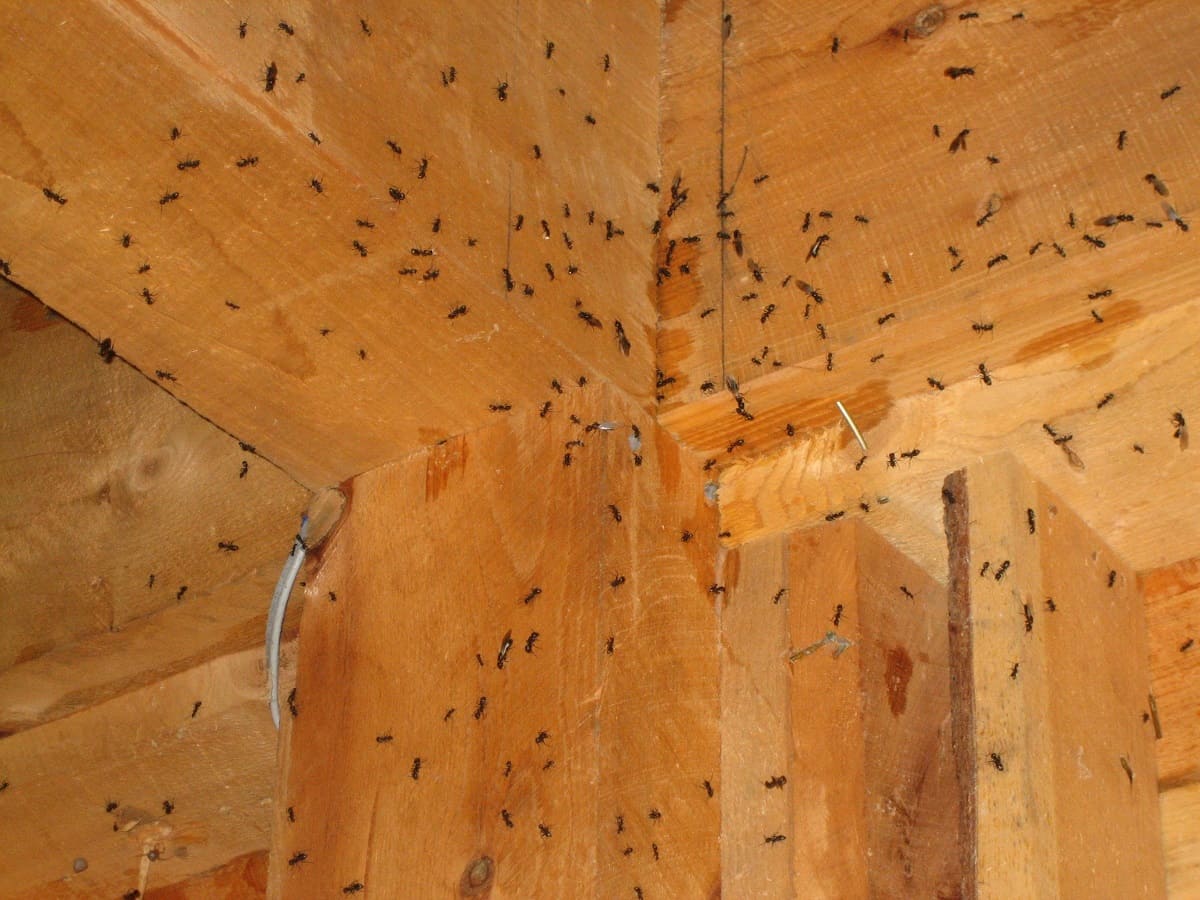
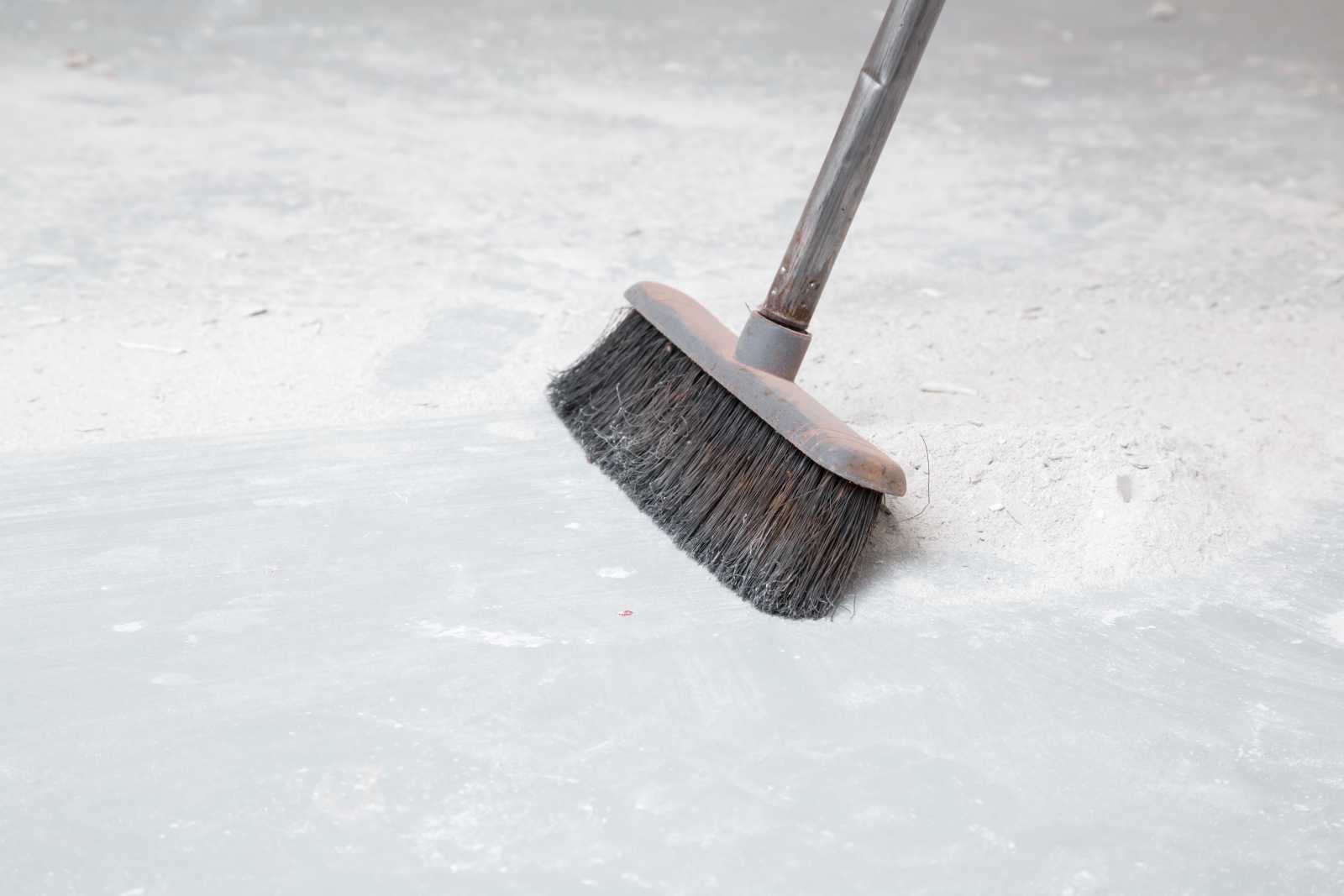
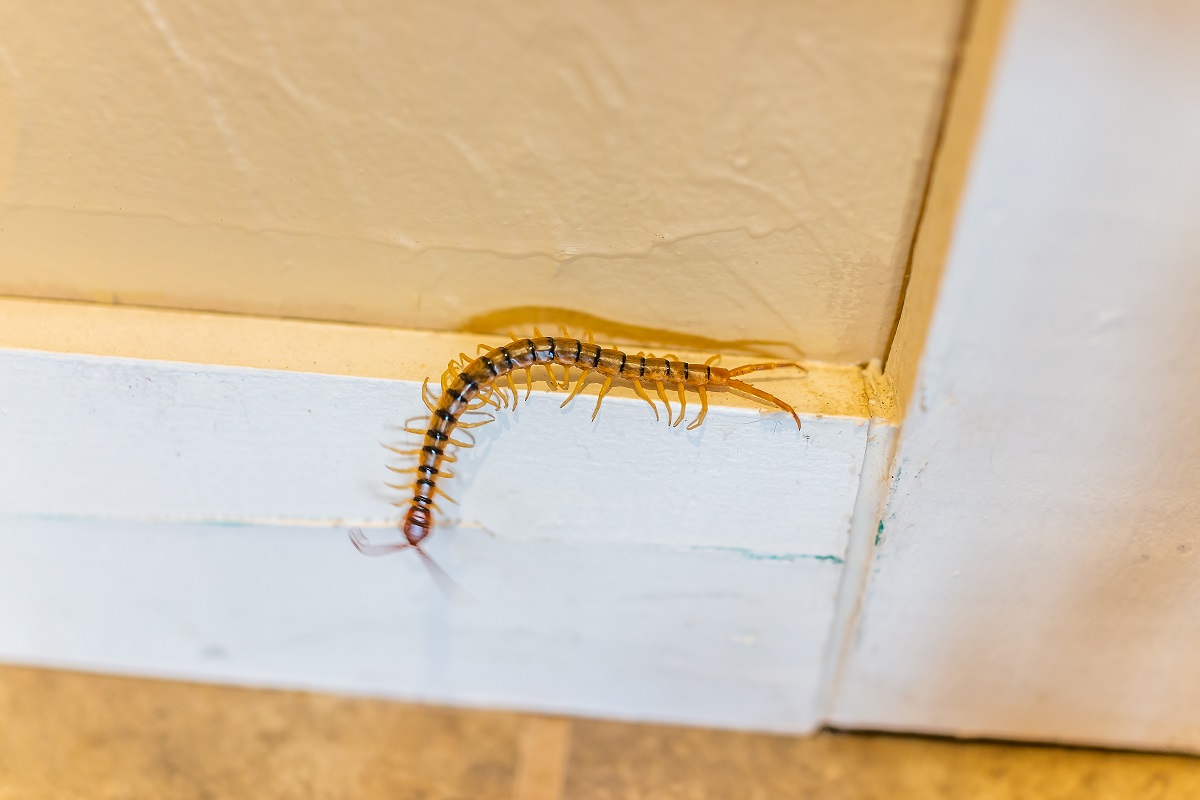
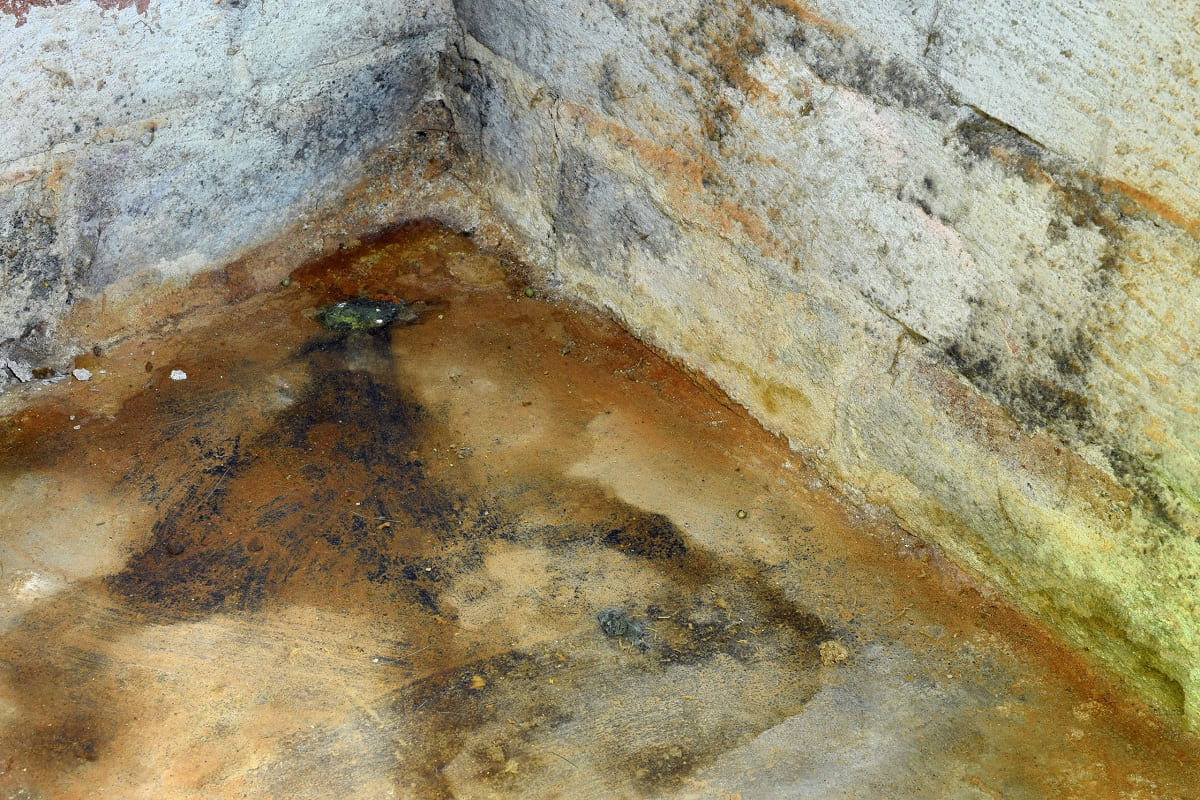
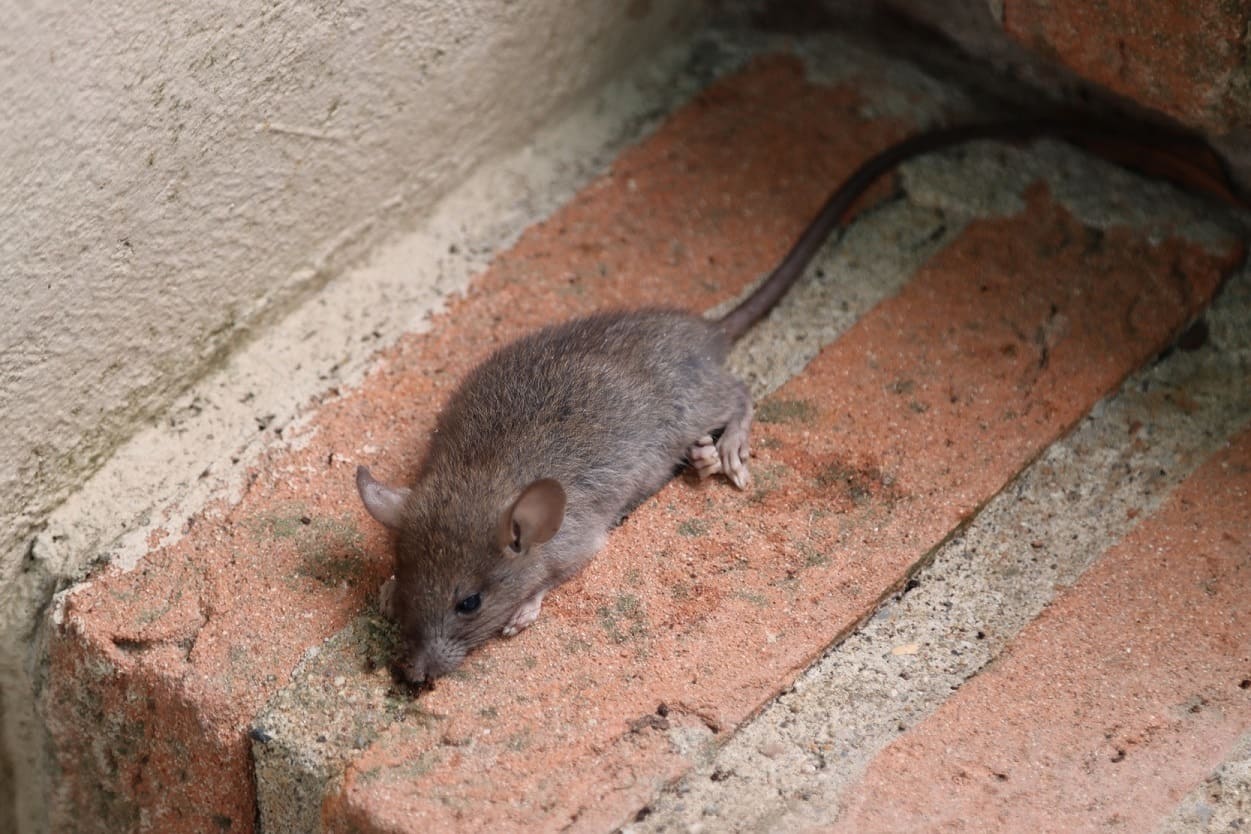

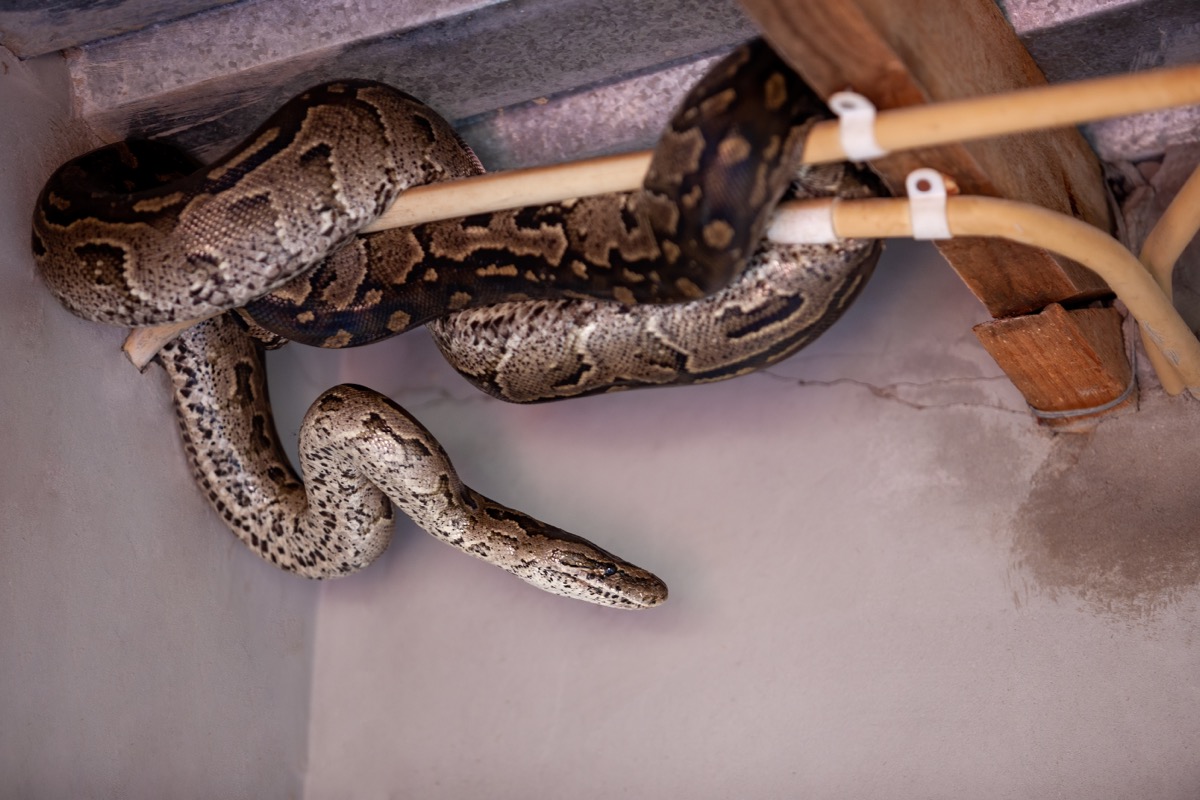

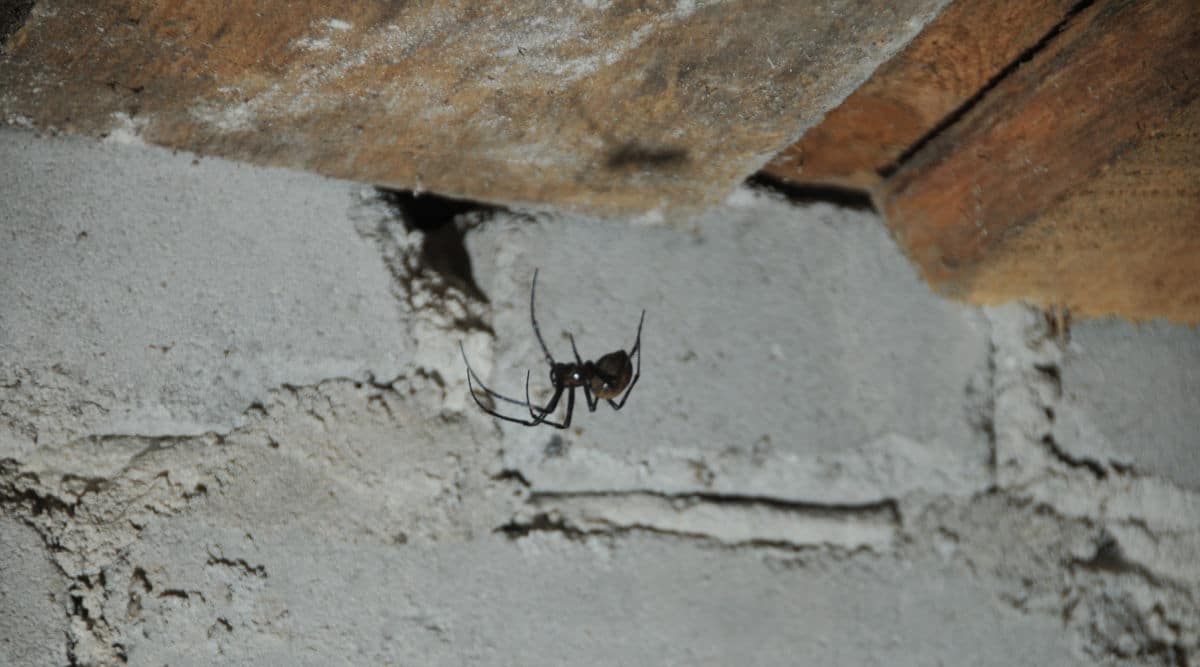

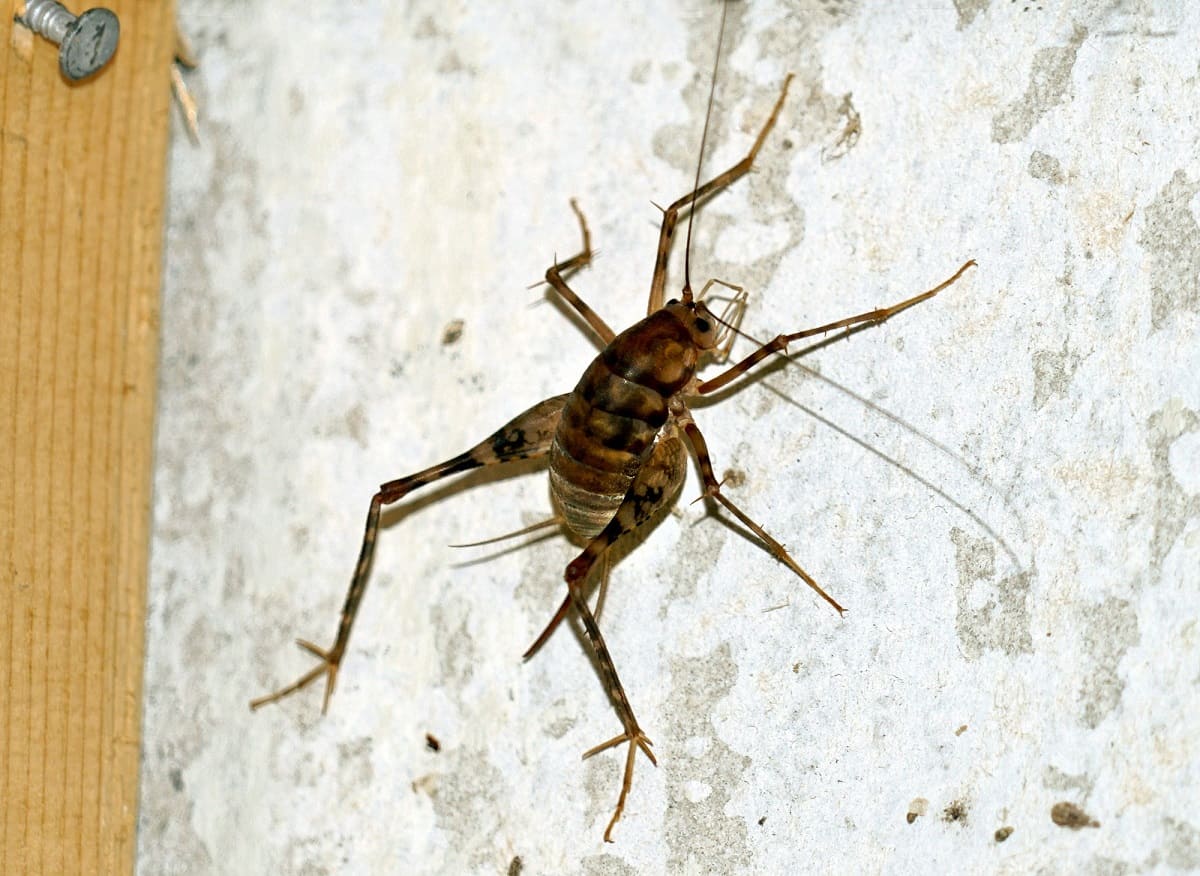
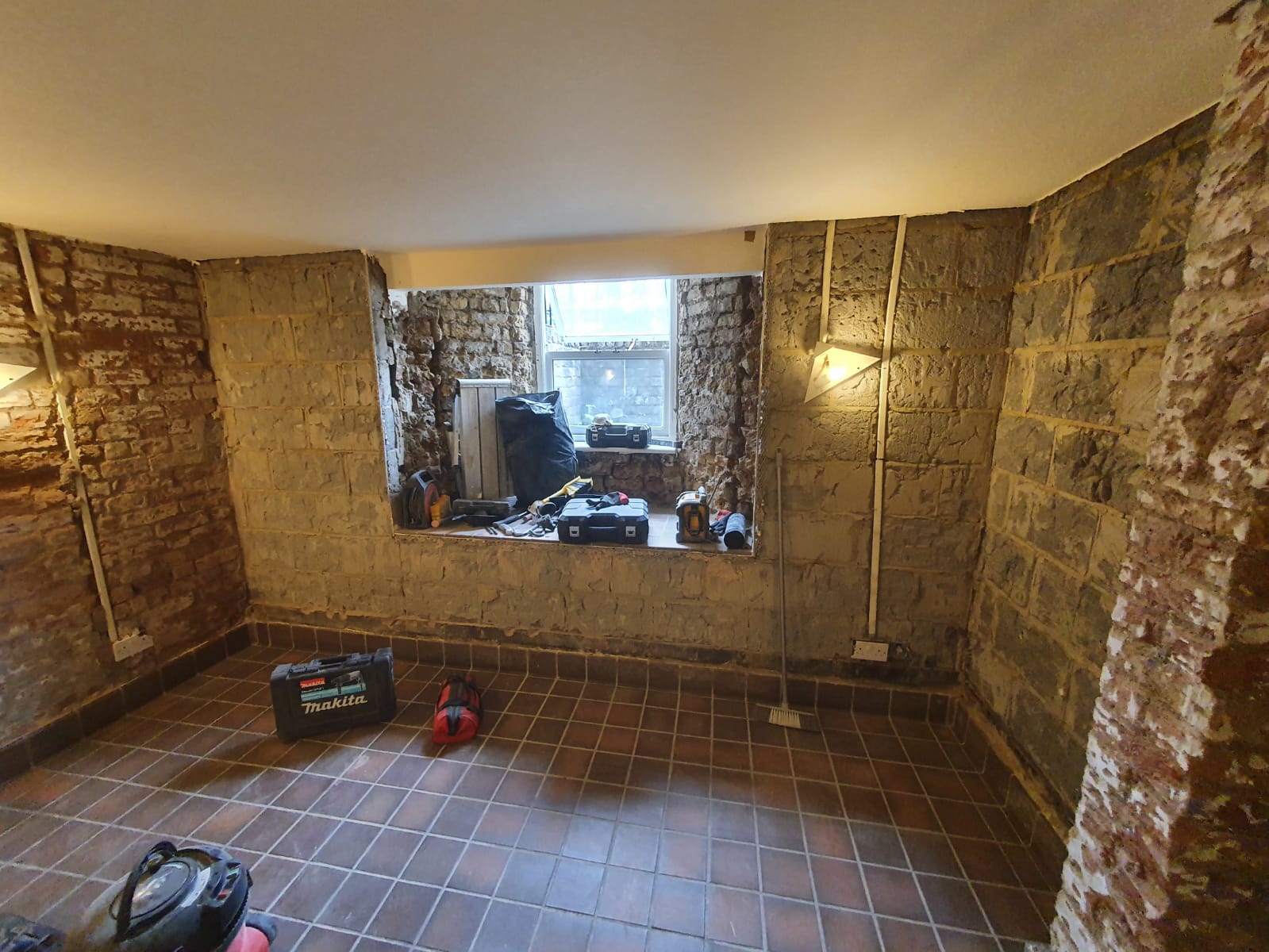



0 thoughts on “How To Get Rid Of Crickets In The Basement”